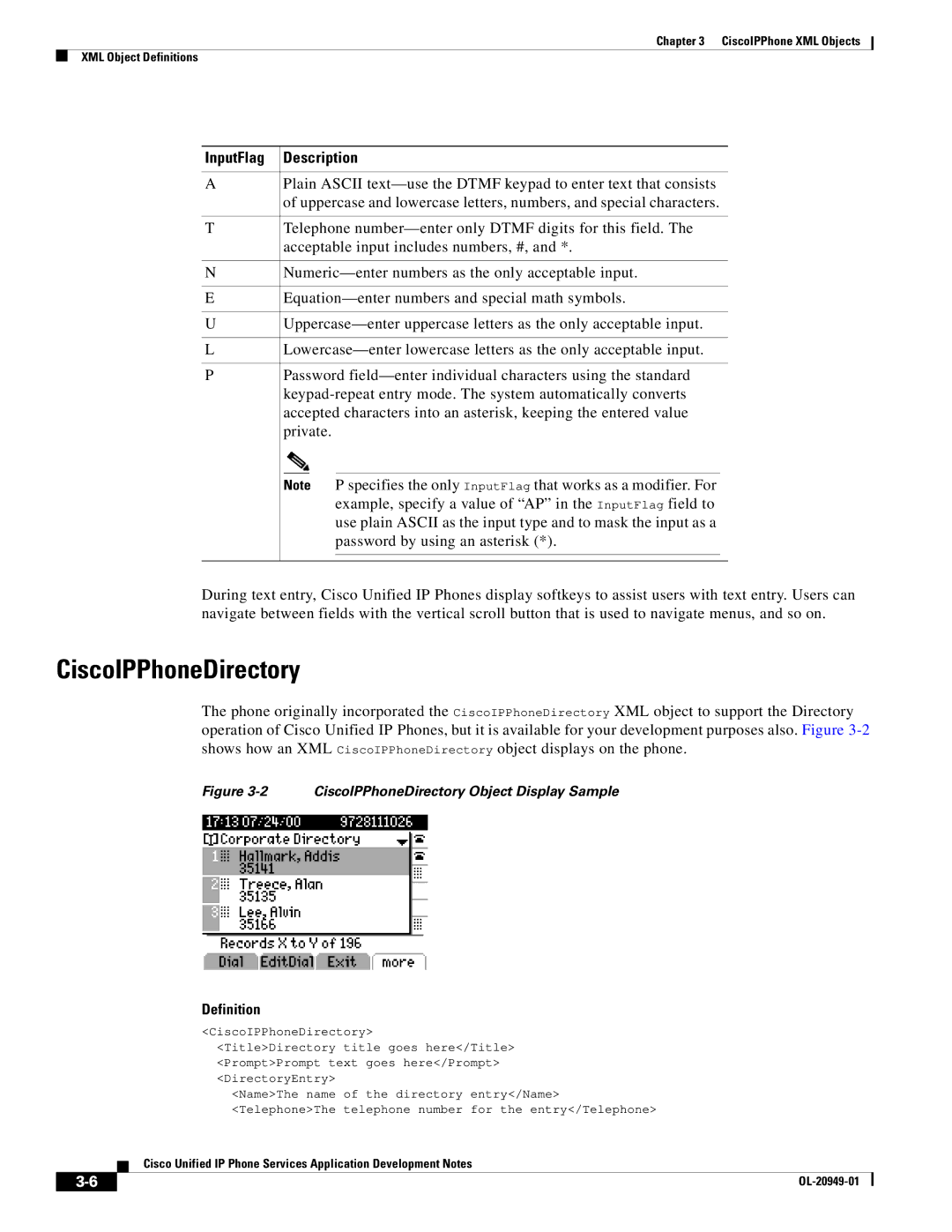
Chapter 3 CiscoIPPhone XML Objects
XML Object Definitions
InputFlag | Description |
A | Plain ASCII |
| of uppercase and lowercase letters, numbers, and special characters. |
|
|
T | Telephone |
| acceptable input includes numbers, #, and *. |
|
|
N | |
|
|
E | |
|
|
U | |
|
|
L |
PPassword
Note P specifies the only InputFlag that works as a modifier. For example, specify a value of “AP” in the InputFlag field to use plain ASCII as the input type and to mask the input as a password by using an asterisk (*).
During text entry, Cisco Unified IP Phones display softkeys to assist users with text entry. Users can navigate between fields with the vertical scroll button that is used to navigate menus, and so on.
CiscoIPPhoneDirectory
The phone originally incorporated the CiscoIPPhoneDirectory XML object to support the Directory operation of Cisco Unified IP Phones, but it is available for your development purposes also. Figure
Figure 3-2 CiscoIPPhoneDirectory Object Display Sample
Definition
<CiscoIPPhoneDirectory> <Title>Directory title goes here</Title> <Prompt>Prompt text goes here</Prompt> <DirectoryEntry>
<Name>The name of the directory entry</Name> <Telephone>The telephone number for the entry</Telephone>
Cisco Unified IP Phone Services Application Development Notes
|
| |
|
